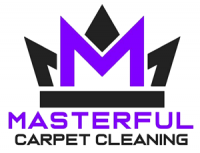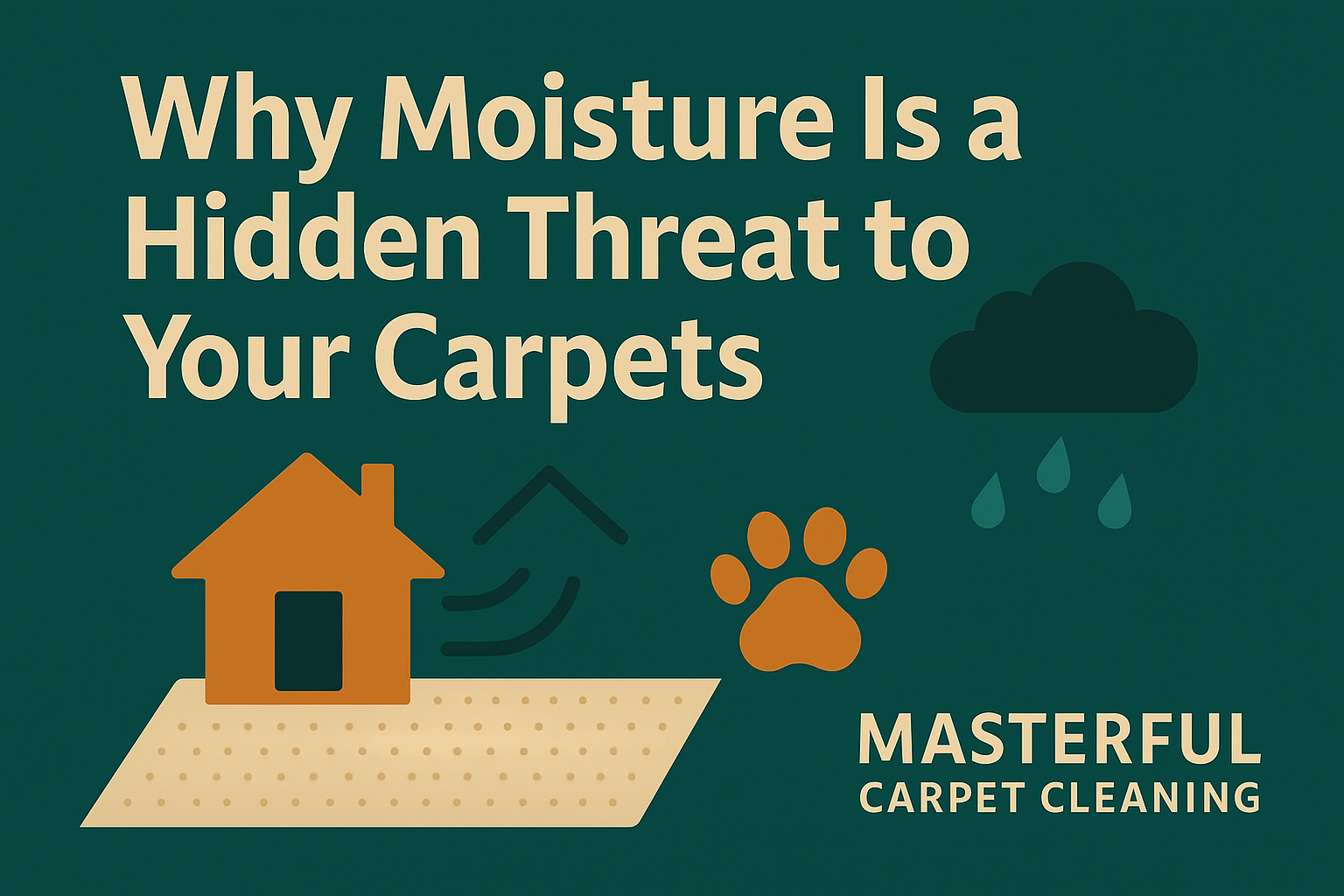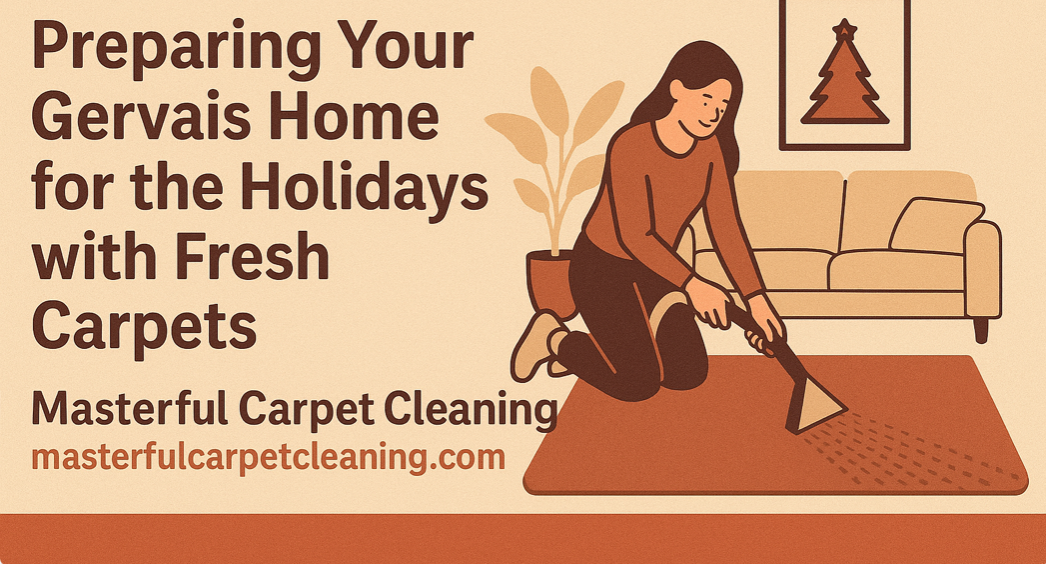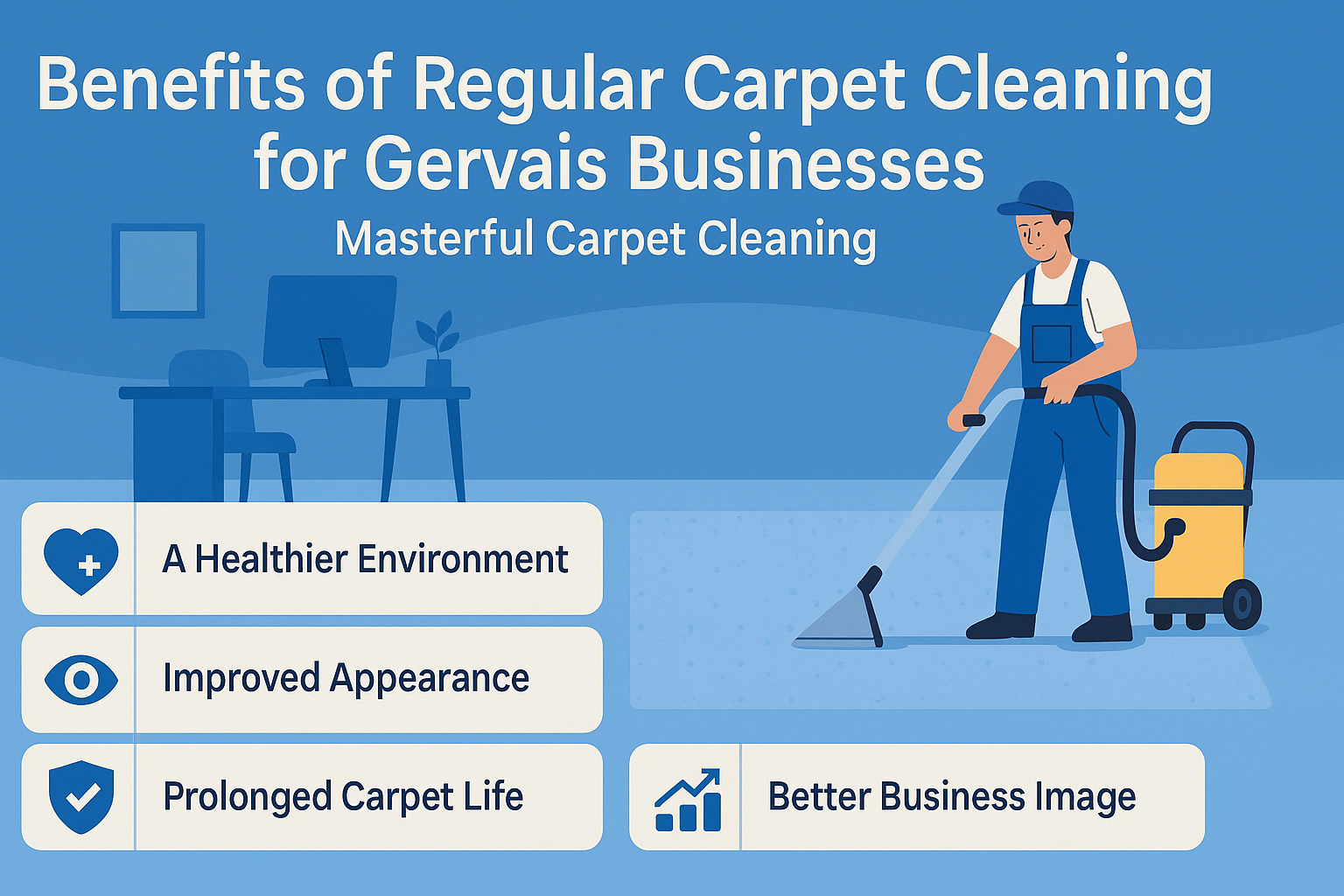Choosing the Right Mop for Different Floor Types

Selecting an appropriate mop for various floor types is very important in maintaining the longevity and appearance of flooring surfaces. The right mop not only effectively cleans but also prevents damage to the floors.
The Importance of Choosing the Right Mop
Choosing the correct mop is essential for effective cleaning without leaving a sticky residue or streaks. Each floor type, from hardwood to tile, requires a specific mop type to ensure thorough cleaning without causing damage.
Factors to Consider
When selecting a mop, several factors should be considered:
- Floor Type: Hardwood, engineered wood, laminate, ceramic tile, vinyl, linoleum, and stone floors each have different needs in terms of moisture and cleaning methods.
- Cleaning Efficiency: The mop should be able to pick up dirt and grime effectively. For example, microfiber mops are known for their ability to absorb dirt and even germs with minimal water.
- Mop Type: There are various mop types, including flat, sponge, string, strip, steam, and microfiber mops, each suited to different cleaning tasks and floor types.
- Ease of Use: Consider the weight, portability, and whether you prefer a mop with a built-in wringing mechanism.
Recommendations Based on Floor Types
- Hardwood, Engineered Wood, and Laminate Floors: A microfiber mop and a spray bottle of floor cleaner are ideal as they use minimal liquid. Using a bucket with a wringer or spinner is recommended to extract excess moisture.
- Ceramic Tile, Vinyl, Linoleum, and Stone Floors: A string mop and bucket of cleaner, or a microfiber mop with a built-in sprayer, are effective as they can reach nooks and crannies. Steam mops are suitable for ceramic tile or natural stone floors but should be used cautiously if the grout or tiles are cracked.
Selecting the right mop requires understanding the specific needs of your floor type and the level of dirt and grime you are dealing with. A well-chosen mop not only cleans effectively but also contributes to the longevity and appearance of your floors.
Whether you choose a manual or an electric model, the key lies in matching the mop’s capabilities with your floor’s requirements.

Hardwood Floors
Hardwood floors, revered for their diverse graining and rich colors, add a unique aesthetic to any space.
They are prone to showing dirt and dust, especially in high-traffic areas or homes with pets and children. Selecting the right mop is important for maintaining these floors without causing damage or cracking.
The key lies in choosing mops that are gentle yet effective on hardwood surfaces, avoiding overly abrasive tools like certain brooms.
Types of Mops Suitable for Hardwood
When choosing a mop for hardwood floors, consider the following types:
- Flat Mops: These mops are suitable for dusting and wet mopping, offering versatility for different cleaning needs.
- Microfiber Mops: A microfiber mop, such as the Mr.Siga Professional Microfiber Mop, is highly effective on hardwood floors. Its wide, rectangular mophead with 360-degree swivel action allows efficient cleaning with fewer swipes. These mops are known for their ease of use and the ability to clean large areas quickly.
- Electric Mops: Electric mops, both corded and cordless, offer advanced features for cleaning hardwood floors, including various cleaning modes and steam options for more thorough cleaning.
Using the Mop on Hardwood: Step-by-Step Instructions
- Preparing the Mop: If using a microfiber mop, wet the cleaning cloth, wring it out by rolling it up, and then attach it to the mophead base. Ensure the mop is not too wet to prevent damaging the hardwood.
- Selecting the Cleaning Solution: Use a cleaning solution specifically formulated for hardwood floors. Avoid using harsh chemicals or too much water, especially on unsealed hardwood floors, to prevent damage.
- Mopping Technique: Start by dusting the floor to remove loose dirt and debris. Proceed with wet mopping, moving the mop in the direction of the wood grain. For stubborn dirt and stains, apply the appropriate amount of cleaning solution.
- Post-Cleaning Care: After mopping, rinse the mop and let it air dry. If using a reusable microfiber mophead, launder it after use to maintain cleanliness and efficiency.
Additional Considerations
- Mophead Type: Choose between disposable or reusable mopheads. Reusable mopheads are more eco-friendly and budget-friendly for larger areas.
- Ease of Use: Consider the mop’s weight, portability, and whether it has a built-in wringing mechanism for convenience.
- Safety: Ensure the mop and cleaning solution used are safe for your specific type of hardwood flooring, whether sealed or unsealed.
Selecting the right mop for hardwood floors involves considering the floor type, mop features, and cleaning requirements.
A proper mop choice not only cleans effectively but also preserves the integrity and appearance of the hardwood floors.
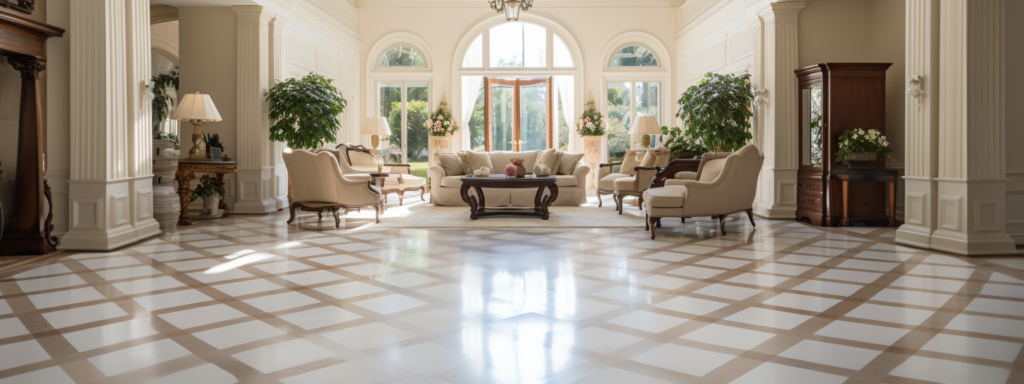
Tile Floors
Tile floors, with their durability and variety in ceramic, porcelain, and natural stone, necessitate specific cleaning tools.
The ideal mop for tile floors should be gentle yet effective, avoiding damage while efficiently cleaning and removing stains and messes.
Key considerations include the type of tile and its susceptibility to scratching, especially for softer natural stone tiles like slate or marble, which require nonabrasive mops.
Types of Mops Suitable for Tile
- String Mops: Ideal for both residential and commercial cleaning, string mops are absorbent and effective at reaching narrow corners and tight spaces.
- Strip Mops: Similar to string mops but with fabric strips, these are less likely to stay damp and develop odors.
- Flat Mops: Lightweight and easy to use, flat mops are suitable for daily cleaning, with pads that are disposable, reusable, or machine washable.
- Spray Mops: These mops, with a bottle of cleaning solution mounted on the handle, allow for easy cleaning without a bucket.
- Steam Mops: Effective for sealed ceramic and porcelain tiles, steam mops disinfect and clean tough messes.
Mophead Material and Maneuverability
- Mophead Material: The absorbency and gentleness of a mop depend on its material, with options including cotton, synthetic, microfiber, and sponge.
- Maneuverability: Especially important for tile floors, mops should easily reach under and around furniture, tight corners, and baseboards. Flat mops are particularly adept at this, while string, strip, and spin mops offer reasonable maneuverability.
Effective Mopping of Tile Floors: Instructions
- Preparation: Select a mop based on the tile type and cleaning requirement. For regular cleaning, a flat or microfiber mop is suitable, while for deeper cleans, a steam mop may be more appropriate.
- Mopping Technique: Begin by dusting or dry mopping to remove loose debris. For wet mopping, ensure the mophead is damp but not overly wet to prevent water damage.
- Cleaning Solution: Use a suitable cleaning solution, especially for grout cleaning. Some mops come with a built-in dispenser for convenience.
- Wringing Mechanism: Utilize the mop’s wringing mechanism to maintain the correct moisture level. This could be a lever or twist mechanism on the handle or a spin system in the bucket.
- Handle Comfort: An ergonomic, nonslip grip and an adjustable-height handle can make the mopping process more comfortable and efficient.
Choosing the right mop for tile floors involves considering the mop type, material, wringing mechanism, and the specific needs of the tile.
The goal is to achieve thorough cleaning without causing damage, ensuring that tile floors maintain their appearance and longevity.

Laminate Floors
Laminate flooring, known for its durability and aesthetic appeal, requires specific care to maintain its appearance.
An essential rule when cleaning laminate is to avoid excessive moisture, as too much can cause swelling or warping of the floor base. The best mop for laminate floors should be only slightly damp and gentle, as laminate is scratch-resistant but vulnerable to aggressive scrubbing.
Popular mop types for laminate include spray, flat, spin, electric, and wet/dry combos, most featuring microfiber pads.
These mops are suitable for laminate as well as other hard floor types. They often come with features like large mopheads, manual triggers, adjustable mopheads, and refillable bottles, enhancing their ease of use.
Mopping Laminate Floors: Instructions
- Preparation: Choose a mop that won’t leave moisture behind, such as a microfiber mop, to protect the flooring’s smooth layer and avoid streaks.
- Mop Types:
- Microfiber Mop: Ideal for large areas, with an 18-inch swivel head for efficient cleaning. The microfiber pads are machine washable, ensuring a streak-free shine.
- Electric Spin Mop: The Bissell SpinWave features spinning microfiber mop pads, suitable for quick cleanups and gentle scrubbing.
- Electric Mop: Nellie’s Wow mop offers deep cleaning with oscillating soft scrubbing pads, perfect for more intense cleaning tasks.
- Microfiber Mop and Bucket Set: Features a mop-cleaning mechanism and wringer to keep the mop dry enough for laminate floors.
- Spray Mop: The O-Cedar ProMist Max, for example, has a dual-sided mop head with a refillable bottle, allowing for easy application of cleaning solution.
- Spin Mop: The O-Cedar EasyWring includes a soft microfiber strip mop with a bucket featuring a spin-wringing mechanism, enabling easy use without bending or stooping.
- Rubbermaid Reveal Spray Mop: Comes with a microfiber mop pad and nonscratch scrubber for varied cleaning needs, from light messes to stuck-on grime.
- Technique: Start by dry dusting the laminate floor to remove loose debris. For wet mopping, ensure the mophead is only slightly damp. Apply gentle pressure to clean without damaging the laminate surface.
Selecting the right mop for laminate floors involves balancing the need for effective cleaning with the requirement to minimize moisture and abrasion.
Whether choosing a manual or an electric mop, the focus should be on gentle, efficient cleaning to maintain the integrity and appearance of laminate flooring.

Stone Floors
Stone floors, with their varying textures ranging from smooth or polished to porous or textured finishes, require specific cleaning tools.
Mops designed for stone floors should feature materials that are gentle on the floor’s surface to prevent scratches or damage. Typically, these mops have soft, microfiber surfaces that effectively remove dirt and debris without leaving scratches.
When selecting a mop for stone floors, it’s important to consider the stone type, floor texture, and the cleaning solution to be used. Stone floor mops, including microfiber, string, and sponge mops, are made to handle different stone surfaces gently but effectively.
Cleaning Stone Floors with a Mop: Guidance
- Mop Choice: Opt for a mop that is gentle on stone surfaces and does not leave any residue or scratches. The mop should effectively remove dirt and grime without causing damage to the stone, helping to retain its shine and beauty for a longer time.
- Cleaning Solution: Use a pH-neutral cleaner specifically designed for stone floors to avoid damage to the surface. Avoid harsh or acidic cleaners that can harm the stone.
- Spill Management: Clean up spills immediately using a soft cloth or paper towel and a pH-balanced cleaner. Be gentle and avoid abrasive tools or chemicals.
- Protective Measures: Protect stone floors from scratches and scuffs using furniture pads and by being cautious with hard-soled shoes. Regular maintenance can prevent wear and tear and extend the floor’s lifespan.
- Sealing: Apply a stone sealer to protect against water, oil, and other substances that can damage natural stone. Ensure the sealer is suitable for your specific stone type.
- Addressing Stains: For deep stains or etching, consult a professional before attempting DIY solutions. Professional guidance can help maintain the integrity of the stone surface.
- Grout and Caulk Maintenance: Regularly clean grout and caulk with a pH-neutral cleaner. Address any damage or discoloration promptly to maintain the floor’s appearance.
- Regular Inspection: Routinely inspect stone floors for small signs of damage or wear, such as cracks or chips, to address them before they worsen.
By using the right tools and cleaning methods, including gentle mops and appropriate cleaning solutions, the beauty and longevity of natural stone floors can be effectively preserved.
Regular maintenance and protective measures are key to ensuring that these floors continue to enhance the aesthetics of the space they occupy.
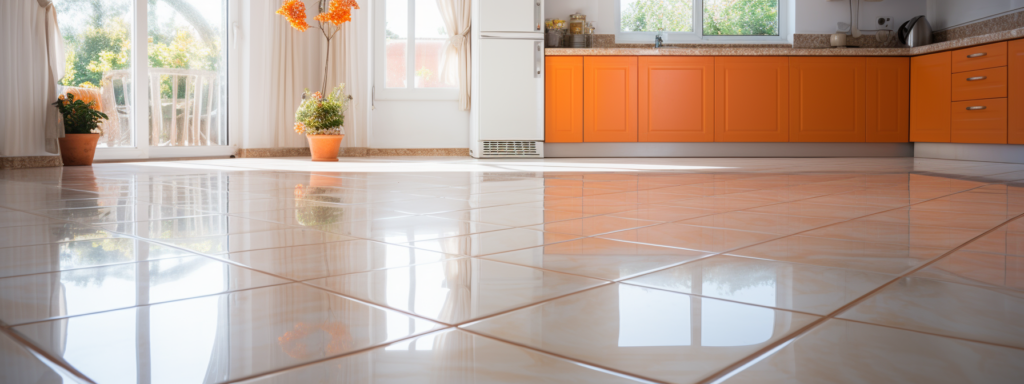
Manual vs. Electric Mops
Manual Mops: Pros and Cons
Manual mops, known for their simplicity and affordability, offer a straightforward approach to cleaning floors. They are particularly agile, allowing for cleaning in obstructed areas such as under furniture or tight spaces.
Pros:
- Easy Storage: Manual mops require minimal storage space.
- Maneuverability: Lightweight and easy to handle, they are ideal for quick cleanups.
- Cost-Effective: Manual mops are generally cheaper than their electric counterparts.
Cons:
- Labor-Intensive: Manual mopping can be physically demanding, particularly over larger areas.
- Potential for Dirty Water Spread: If the water isn’t changed regularly, manual mops can spread dirt around rather than remove it.
- Longer Drying Times: Floors may remain wet for extended periods after mopping.
Electric Mops: Pros and Cons
Electric mops are gaining popularity due to their ease of use and advanced cleaning features. Powered by electricity, they reduce physical effort and are versatile across various floor surfaces.
Pros:
- Ease of Use: Electric mops are usually lightweight and do not require the physical exertion associated with manual mops. They are particularly beneficial for the elderly or those with disabilities.
- Effective Cleaning: Electric mops with steam cleaning options dissolve the soil and extract germs without needing extra water. They also negate the requirement for chemical cleaning products.
- Time Efficiency: Electric mops save time, especially with steam options that quickly remove dirt, dust, and stains.
- Health and Environmental Benefits: Steam cleaning is safe for children and pets, avoids toxic substances, and is environmentally friendly.
Cons:
- Higher Cost: Electric mops are more expensive than manual mops due to their advanced features.
- Dependency on Electricity: These mops either need to be plugged in, charged between uses, or require batteries.
Choosing Between Manual and Electric Mops
The decision between manual and electric mops depends on personal preference, budget, and specific cleaning needs. While both types effectively clean floors, electric mops offer added convenience and ease, especially beneficial for larger areas or users seeking a less labor-intensive option.
Manual mops, being more budget-friendly and straightforward, are suitable for smaller spaces or less frequent cleaning tasks. Ultimately, the choice hinges on individual cleaning requirements, physical ability, and the extent of the area to be cleaned.
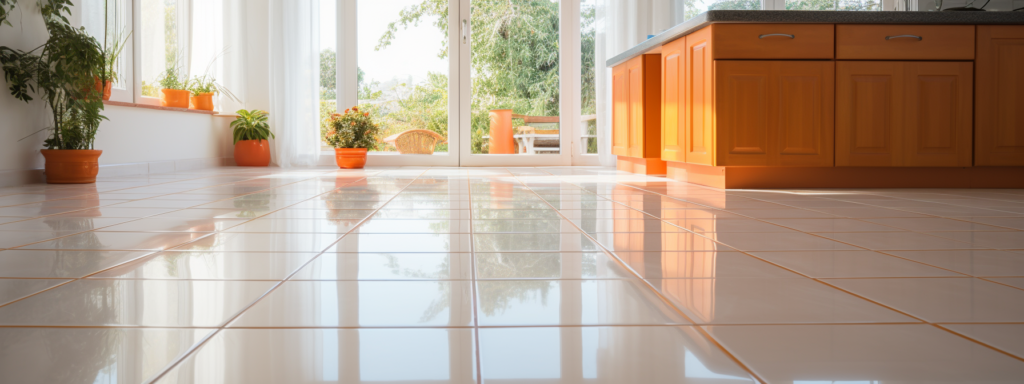
Wet vs. Dry Mopping
Wet and dry mopping cater to different cleaning needs, with each type playing a vital role in floor maintenance.
Dry mopping is akin to a broom but with added efficiency, using microfiber to collect debris. It is suitable for quick cleaning throughout the day, especially in high-traffic areas or around customers.
Wet mopping, on the other hand, is used with water and cleaning solutions to clean up spills, gunk, or dried debris. It’s generally reserved for more thorough cleaning tasks, often performed at the end of the day.
How to Use a Wet Mop
- Preparation: Begin with a floor that’s already been dry mopped to remove loose dust and debris.
- Soaking the Floor: Apply hot water and cleaning solution to a section of the floor, letting it stand briefly to loosen dirt.
- Mopping: Rinse and wring out the wet mop, then use it to wipe the floor in a back-and-forth motion, absorbing water and dirt.
- Rinsing: Regularly rinse and wring the mop during the process to ensure effective cleaning and avoid spreading dirt.
- Final Touches: Continue until the entire floor is cleaned, ensuring it is left streak-free.
How to Use a Dry Mop
- Mopping Technique: Keep the mop head on the floor and push it across, lifting it occasionally to shake off collected debris into a trash can.
- Coverage: Move back and forth in a uniform pattern, slightly overlapping each stroke.
- Additional Cleaning: If using a spray or disinfectant, follow the manufacturer’s instructions for optimal results.
- Routine Cleaning: Regularly using a dry mop can maintain the floor’s cleanliness and appearance.
Both wet and dry mopping are essential for comprehensive floor care. While dry mopping is ideal for daily upkeep and removing loose debris, wet mopping provides a deeper clean, tackling spills and stubborn dirt. Proper use of both methods contributes to the overall maintenance, value, and safety of the property.
Integrating both mopping techniques into your cleaning routine will ensure floors are thoroughly and effectively cleaned, maintaining their appearance and extending their lifespan.

The Art of Choosing the Right Mop for Your Floor Type
Key Takeaways
- Hardwood Floors: Opt for gentle mops, such as microfiber ones, that are slightly damp to prevent damage and maintain the wood’s integrity.
- Tile Floors: Use mops that can handle the unique textures of tile, like flat or steam mops, ensuring efficient cleaning without leaving residues.
- Laminate Floors: Choose mops that use minimal moisture, like spray or microfiber mops, to avoid warping and maintain the laminate’s shine.
- Stone Floors: Select soft, nonabrasive mops, such as those made from microfiber, to clean without scratching the stone surface.
- Manual vs. Electric Mops: Understand the balance between manual mops’ agility and electric mops’ efficiency in different contexts.
- Wet vs. Dry Mopping: Recognize the importance of using the right mop type depending on the floor’s sensitivity to moisture and the type of dirt or debris present.
Final Thoughts
The right mop not only cleans your floors but also protects and extends their lifespan. Whether you prefer the traditional approach of manual mopping or the convenience of electric mops, the key lies in understanding the needs of your specific flooring type.
By applying the insights from this guide, you can ensure that your floors remain clean, undamaged, and visually appealing for years to come.
Author
-

As the Co-Owner of Masterful, Randy has been providing quality cleaning services to the Salem and Portland areas of Oregon for many years. He has built a reputation for excellence in the industry. His team take prides in using the latest cleaning techniques and technologies to deliver exceptional results every time.
View all posts
